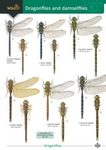![Preliminary Key for the Identification of Larvae of the Australian Petaluridae, Archipetaliidae, Austropetaliidae, Telephlebiidae & Aeshnidae (Odonata) Preliminary Key for the Identification of Larvae of the Australian Petaluridae, Archipetaliidae, Austropetaliidae, Telephlebiidae & Aeshnidae (Odonata)]()
Click to have a closer look
About this book
Customer reviews
Related titles
About this book
The more primitive Australian Epiproctophora were treated by Watson et al. (1991) under the families Petaluridae, Neopetaliidae and Aeshnidae. Hawking & Theischinger (1999), however, adopted for these dragonflies a classification that Bechly (1996) based mainly on his own studies and on Carle & Louton (1994) and Lohmarm (1996).
The families Petaluridae, Archipetaliidae, Austropetaliidae, Telephlebiidae and Aeshnidae in their present concepts are a significant portion of the Australian dragonfly fauna, including 56 recognised species in 18 genera. Whereas Petaluridae, Archipetaliidae and Austropetaliidae each are represented in Australia by a single genus with between one and five species, Telephlebiidae and Aeslmidae are quite diverse, also at the generic level. After many smaller papers and the more comprehensive works of Tillyard (1916), Theischinger (1982) and Hawking & Theischinger (1999) we now know the larvae of most species of the treated families.
It is the aim of this presentation to facilitate the identification of all known larvae of several groups of Australian dragonflies whose identification up to now would have required a rather large number of papers, some of them containing misleading errors. There is also strong emphasis on the still existing gaps in our knowledge.
To establish and confirm family identification, an updated version of the family key presented by Hawking & Theischinger (1999) is given at the beginning. In addition there are, for each of the five families concerned, a taxonomic overview, a brief diagnosis and when appropriate a key to genera and species followed by more detailed generic and specific treatments. Whereas the genus lists given for each family and the species lists given for each genus are alphabetical, the more detailed treatments of genera and species are arranged in an order of detected similarity which may or may not reflect phylogenetic relationships.
As in previous papers of similar nature (Theischinger 2000a, 2001a), taxonomic notes and diagnoses under higher taxa only cover the Australian members. Measurements and descriptions are given from last instar larvae (L) or from final instar exuviae (E). Most illustrations are given from final instar exuviae. As colouration of individuals may be variable in life due to specific conditions in the habitat and as colouration of preserved specimens may reflect the ways or methods of collection and preservation, colours are not given in the descriptions; they may range from pale greyish yellow to dark greyish brown or black with pale transverse bars or midline. Generally pubescence is rather weak in all taxa and does not appear particularly useful for diagnoses. It is omitted in illustrations of most larvae or exuviae but presented and specified in some detail illustrations and descriptions. Smoothness or dentation of labial palps may to some degree be effected by conditions of habitat and food and possibly others. Generally only the most reliable characters are used in keys and diagnoses. In spite of that the keys may be of limited use for identifying specimens other than final instar larvae and exuviae. All diagnoses are made up in the same style facilitating comparison with taxa of the same rank and confirmation of the results obtained from running the keys.
Customer Reviews






























